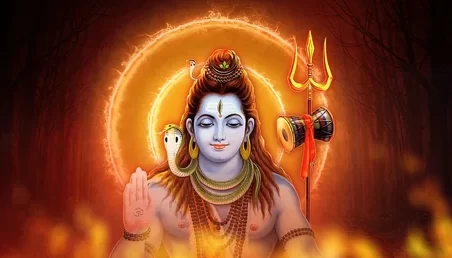Sawan 2024: The Sawan or Shravan month begins today, July 22. The Shravan maas also marks the beginning of the monsoon season in India. An significant occasion for Hindus, devotees of Lord Shiva and Maa Parvati adore them and fast to seek their blessings. They observe the vrat, also known as Sawan Somwar, on Mondays of the Sawan month. Lord Shiva is served panchamrit, jaggery, bhuna chana, bel patra, datura, milk, rice, and Chandan, among other things. Know about the start and end dates, history, significance, shubh muhurat, puja vidhi, and other details here:
Sawan 2024 start and end date:
According to Drik Panchang, Sawan starts on July 22 and concludes on August 19 this year. This means Sawan will be honored for 29 days, including five Mondays. There will be five Sawan Somwars this year, and devotees can observe the fast on the following days:
Shravan Calendar
July 22, 2024 – Sawan Begins (1st Shravan Somwar vrat)
July 29, 2024 – 2nd Shravan Somwar vrat
August 5, 2024 – 3rd Shravan Somwar vrat
August 12, 2024 – 4th Shravan Somwar vrat
August 19, 2024 – Sawan ends (Last or 5th Shravan Somwar vrat)
In other states, including Andhra Pradesh, Telangana, Goa, Maharashtra, Gujarat, Karnataka and Tamil Nadu, Sawan will begin on August 5 and end on September 3.
Shubh muhurat:
Drik Panchang says Sawan Purnima falls on Monday, August 19. The Abhijeet Muhurat is from 12:04 pm to 12:55 pm on July 22, and the Shravana Nakshatra falls at 10:21 pm on July 22. Meanwhile, the Pratipada tithi will last up to 1:11 pm.
History and significance:
According to Indian mythology, the origins of Sawan may be traced back to the Samudra Manthan, when devas and asuras gathered to seek Amrit, or the elixir of immortality. The churning of the water resulted in the emergence of a variety of things, including jewelry, animals, Goddess Lakshmi, and Dhanvantri. However, when Halahal, a lethal poison, appeared, it caused havoc.
Anyone who came in contact with it began to be annihilated. As a result, Lord Brahma and Lord Vishnu sought help from Lord Shiva. They begged Lord Shiva, who could withstand this terrible poison, to ingest it. After consuming the poison, his body became blue. Goddess Parvati, concerned that the poison would spread throughout the Lord’s body, entered his throat and stopped the poison from spreading further. Thus, Lord Shiva came to be known as Neelkanth.
These events occurred during the month of Sawan. As a result, Lord Shiva and Mata Parvati are worshipped every Monday throughout the month. Sawan month is considered auspicious by Hindus since it coincides with several key festivals. According to Drik Panchang, holidays and fasts to follow include Kamika Ekadashi, Mangala Gauri Vrats, Hariyali Teej, Nag Panchami, Raksha Bandhan, Narali Purnima, and Kalki Jayanti. Some Shiva devotees embark on a Kanwar yatra, visiting sacred spots to offer Gangajal to Lord Shiva.
Puja vidhi and samagri:
During Sawan Purnima, devotees should worship Lord Shiva, Maa Parvati, Chandra Dev, Shri Hari Vishnu, and Maa Laxmi. People can also perform Satyanarayan Puja at home. On this day, get up early, take a bath, and gather puja materials such as Belpatra, incense, lamp, pure water, flowers, sweets, fruits, and more.
Then, worship Lord Shiva and Maa Parvati, offering Belpatra, flowers, and fruits. In addition, light incense sticks and diyas. After that, worship Goddess Lakshmi and Lord Vishnu by offering flowers, cowrie shells, and yellow fruits. On Sawan Purnima, once the moon rises at night, worship Chandra Dev with Arghya and mantras.







 Finance
Finance







